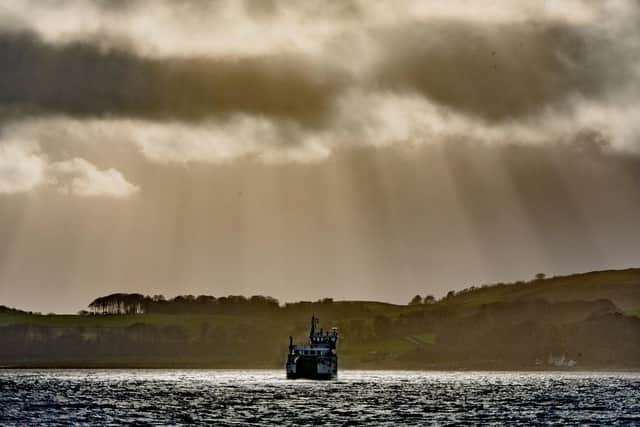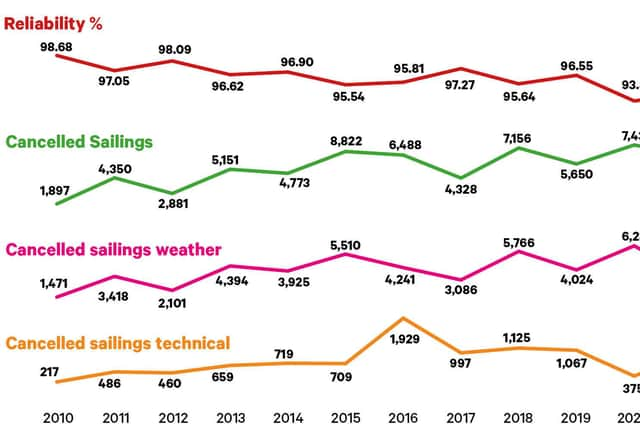Calls for shake up of Scotland's ferry system to protect islanders
The Scottish Government-owned operator’s reliability has dipped to 94.6 per cent so far this year – two percentage points below pre-Covid pandemic levels and well down on performance of more than 98 per cent a decade ago.
Major delays to the construction of two large new ferries have exposed the fragility of the ageing fleet, with sailings cancelled for technical reasons totalling 989 up to September compared to 1,067 for the whole of 2019, and only 217 in 2010.
Advertisement
Hide AdAdvertisement
Hide AdThe latest figure reflects a series of vessel breakdowns with knock-on effects across the CalMac network this year, such as the operator’s newest and largest ferry Loch Seaforth put out of action because of engine failure for seven weeks in April and May.


Critics of CalMac’s £800 million eight-year contract pointed to competition on routes in Norway which had improved services and lowered costs.
Joe Reade, chair of the Mull & Iona Ferry Committee, said: “We need the operator to have an incentive to improve services, find economies and efficiencies, become more productive, and spend taxpayer money to better effect.
"The only way those things can be encouraged is by the introduction of some competition into the system.”


Consultant Roy Pedersen said: "State-funded routes need to be ‘de-bundled’ better to focus on community needs in the most cost-effective manner.
“It has often been stated that the large CalMac fleet enables vessels to be replaced easily in the event of breakdown or other disruption.
"In practice, CalMac performs worse in this regard than almost all other Scottish operators, with frequent service disruption and capacity constraints being widely criticised by the communities affected.”
However, Chris Attkins, secretary of the Arran Ferry Action Group, said breaking up the network “would inevitably hive off the profitable routes and leave the 'lifeline' routes to struggle on.
Advertisement
Hide AdAdvertisement
Hide Ad"We should be aiming for a combined 'Ferries Scotland' body that does everything under one management structure, with renewed focus on delivering service for the islands and value for the taxpayer.”
A Scottish Government spokesperson said: “The independent review of legal and governance arrangements for Scottish Government lifeline ferry services remains on schedule to be delivered around the end of the year.
"This report will present a framework consisting of a range of options.
"This work has included a review of ferry models across the world where there are a number of different types of operation.”
Story in full here.
A message from the Editor:
Thank you for reading this article. We're more reliant on your support than ever as the shift in consumer habits brought about by Coronavirus impacts our advertisers.
If you haven't already, please consider supporting our trusted, fact-checked journalism by taking out a digital subscription.
Comments
Want to join the conversation? Please or to comment on this article.
